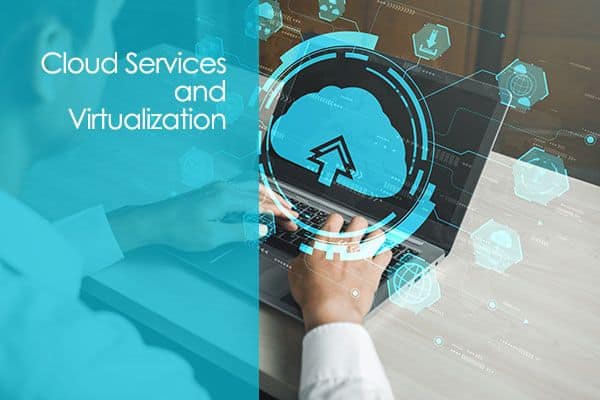17 Training Hours
171 Videos
18 Topics
102 Practice Questions
In the world of cloud computing, Amazon Web Services (AWS) has become a leading provider of cloud-based solutions. With over 200 different services, AWS has quickly become the go-to choice for businesses looking to take advantage of the benefits of cloud computing. And with the growing demand for AWS professionals, there’s never been a better time to consider becoming AWS Certified.
The AWS Certified Cloud Practitioner certification is an entry-level certification that provides a foundational understanding of AWS cloud services and how they can benefit organizations. In this blog post, we’ll explore the features and benefits of the AWS Certified Cloud Practitioner certification, as well as the employment opportunities and types of jobs you can get with this certification.
Features of the AWS Certified Cloud Practitioner Certification
The AWS Certified Cloud Practitioner certification is designed to validate your understanding of AWS cloud services and your ability to use those services to create solutions for businesses. To earn this certification, you must pass a single exam that covers the following topics:
1. Cloud Concepts – covers the basic concepts of cloud computing, including the benefits of cloud computing and the different cloud deployment models.
2. AWS Core Services – covers the core AWS services, including compute, storage, database, and networking services.
3. Security – covers the AWS shared responsibility model, security best practices, and AWS security services.
4. Billing and Pricing – covers the AWS billing and pricing models and how to estimate AWS costs.
5. Support and Deployment – covers AWS support plans and the different AWS deployment options.
The AWS Certified Cloud Practitioner certification is designed to be accessible to anyone, regardless of their technical background. You don’t need any prior AWS experience to take the exam, although some basic knowledge of cloud computing concepts is recommended.
Benefits of the AWS Certified Cloud Practitioner Certification
There are many benefits to earning the AWS Certified Cloud Practitioner certification, including:
1. Validates your AWS Cloud knowledge: The AWS Certified Cloud Practitioner certification validates your understanding of AWS cloud services and demonstrates to potential employers that you have a strong foundational knowledge of the AWS platform.
2. Increases earning potential: According to Payscale, the average salary for an AWS Certified Cloud Practitioner is $95,000 per year.
3. Opens up job opportunities: The AWS Certified Cloud Practitioner certification is recognized by many employers and can open up job opportunities in cloud computing, including roles such as Cloud Support Associate, Cloud Sales Associate, and Cloud Solutions Architect Associate.
4. Demonstrates commitment to professional development: Earning an AWS certification demonstrates your commitment to professional development and your willingness to invest in your career.
Employment Opportunities with the AWS Certified Cloud Practitioner Certification
There are a variety of job opportunities available to individuals who hold the AWS Certified Cloud Practitioner certification, including:
1. Cloud Support Associate: As a Cloud Support Associate, you will be responsible for helping customers troubleshoot and resolve technical issues related to AWS services. This role requires strong communication skills and a deep understanding of AWS services.
2. Cloud Sales Associate: As a Cloud Sales Associate, you will be responsible for selling AWS services to potential customers. This role requires strong sales skills and a deep understanding of AWS services and their benefits.
3. Cloud Solutions Architect Associate: As a Cloud Solutions Architect Associate, you will be responsible for designing and implementing solutions for customers using AWS services. This role requires a deep understanding of AWS services and the ability to design solutions that meet the specific needs of customers.
4. Cloud Project Manager: As a Cloud Project Manager, you will be responsible for managing projects related to the implementation of AWS services. This role requires strong project management skills and a deep understanding of AWS services.
Types of Jobs with the AWS Certified Cloud Practitioner Certification
The AWS Certified Cloud Practitioner certification can open up a variety of job opportunities in cloud computing, including:
1. Cloud Administrator
As a Cloud Administrator, you will be responsible for managing the day-to-day operations of an organization’s cloud infrastructure. This includes deploying, configuring, and maintaining AWS services and ensuring that they are running smoothly. A Cloud Administrator may also be responsible for monitoring system performance, troubleshooting issues, and implementing security measures.
2. Cloud Developer
As a Cloud Developer, you will be responsible for developing and deploying applications on the AWS platform. This includes writing code and configuring AWS services to create scalable and efficient applications. A Cloud Developer may also be responsible for testing applications, troubleshooting issues, and ensuring that applications are running smoothly.
3. Cloud Security Engineer
As a Cloud Security Engineer, you will be responsible for ensuring that an organization’s cloud infrastructure is secure. This includes implementing security measures to protect against cyber threats, monitoring system activity for potential security breaches, and responding to security incidents. A Cloud Security Engineer may also be responsible for implementing security policies and training employees on best practices for cloud security.
4. Cloud Data Analyst
As a Cloud Data Analyst, you will be responsible for analyzing large amounts of data stored in the cloud to identify trends and insights that can be used to inform business decisions. This includes designing and implementing data analytics solutions using AWS services like Amazon S3, Amazon Redshift, and Amazon Athena. A Cloud Data Analyst may also be responsible for creating visualizations and dashboards to present data to stakeholders.
Conclusion
The AWS Certified Cloud Practitioner certification is an excellent entry point for individuals looking to start a career in cloud computing. It provides a foundational understanding of AWS cloud services and demonstrates to potential employers that you have the skills and knowledge necessary to create solutions using AWS services. With a growing demand for AWS professionals, earning this certification can open up a variety of job opportunities in cloud computing, including roles like Cloud Support Associate, Cloud Solutions Architect Associate, and Cloud Developer.
Course Outline
Module 1: Introduction to Cloud Computing
Welcome
Why Cloud Computing
What is Cloud Computing
Cloud Computing Deployment Models
Cloud Computing Types
AWS Cloud Overview
AWS Management Console Walk-Through
AWS Shared Responsibility
Summary
Module 2: Identity and Access Management IAM
IAM Overview
IAM Users & Groups Hands-On
IAM Policies Hands-On
MFA Overview
MFA Hands-On
AWS CLI
AWS CLI Installation Hands-On
AWS CLI Hands-On
IAM Roles
IAM Roles Hands-On
IAM Security Tools
IAM Security Tools Hands-On
IAM Best Practices
Shared Responsibility Model for IAM
IAM Summary
Module 3: Elastic Cloud Computing EC2
Budget Setup
EC2 Overview
EC2 Instance Hands-On
Security Groups
Security Groups Hands-On
SSH Overview
SSH Using Putty-Windows
SSH Using CMD-Windows
EC2 Instance Connect
EC2 Instance Roles
EC2 Launch Types
Shared Responsibility Model for EC2
EC2 Summary
Module 4: EC2 Storage
Intro to EC2 Instance Storage
EBS Volume Overview
EBS Volume Hands-On
EBS Snapshots
EBS Snapshots Hands-On
AMI Overview
AMI Hands-On
EC2 Instance Store
EC2 Instance Store Hands-On
Elastic File System – EFS
Shared responsibility Model for EC2 Storage
Section Cleanup
EC2 Instance Storage Summary
Module 5: Elastic Load Balancer and Auto Scaling Group ELB and ESG
Introduction to Scalability & High-Availability
High Availability, Scalability and Elasticity
ELB Overview
ELB Hands-On
ASG Overview
ASG Hands-On
Section Cleanup
Summary
Module 6: Amazon S3
S3 Introduction
S3 Overview
S3 Hands-On
S3 Security
S3 Bucket Policies Hands-On
S3 Websites
S3 Website Hands-On
S3 Versioning
S3 Versioning Hands-On
S3 Access Logs
S3 Access Logs Hands-On
S3 Replication
S3 Replication Hands-On
S3 Storage Classes
Snowball, Snowball Edge and SnowMobile
S3 Summary
Module 7: Database and Analytics
Database Introduction
RDS & Aurora Overview
RDS Database Hands-On
ElastiCache Overview
DynamoDB Overview
DynamoDB Hands-On
RedShift Overview
Amazon EMR Overview
Athena Overview
AWS Glue
DMS Overview
Database & Analytics Summary
Module 8: Other Services
Other Compute Introduction
ECS-Fargate-ECR Overview
What is Serverless
AWS Lambda
AWS Lambda Hands-On
AWS Batch
AWS LightSail
AWS LightSail Hands-On
Other Compute Summary
Module 9: Scaling Your Infrastructure
CloudFormation Overview
Cloud Formation Hands-On
Elastic Beanstalk Overview
Elastic Beanstalk Hands-On
AWS CodeDeploy
AWS SSM
AWS OpsWorks
Infrastructure at Scale Summary
Module 10: Global Applications
Why Global Application
Route 53
Route 53 Hands-On
CloudFront
CloudFront Hands-On
S3 Transfer Acceleration
AWS Global Aceelerator
Global Application Summary
Module 11: Cloud Integration
Cloud Integration Introduction
SQS Service
SQS Service Hands-On
SNS Service
SNS Service Hands-On
Cloud Integration Summary
Module 12: Cloud Monitoring
CloudWatch Metrics and Alarms
CloudWatch Metrics and Alarms Hands-On
CloudWatch Logs
CloudWatch Events and EventBridge
CloudWatch Events and EventBridge Hands-On
CloudTrail
X-Ray
Service Health Dashboard
Personal Health Dashboard
Monitoring Summary
Module 13: Virtual Private Network
Settings the Expectations
VPC and subnets, Internet Gateway and NAT Gateways
VPC and subnets, Internet Gateway and NAT Gateways-Hands-On
NACL and Security Groups
NACL and Security Groups Hands-On
VPC Flow Logs
VPC Peering
VPC Flow Logs and VPC Peering Hands-On
VPC Endpoints
VPC Endpoints Hands-On
Site-to-Site VPNs and Direct Connect
Transit Gateway
VPC Summary
Module 14: Security and Compliance
Introduction to Security and Compliance
DDoS Mitigration
Penetration Testing
KMS and CloudHSM
Secrets Manager
AWS Artifact
GuardDuty
Inspector
AWS Config
AWS Macie
Security and Compliance Summary
Module 15: Machine Learning
Amazon Rekognition
Amazon Transcribe
Amazon Polly
Amazon Translate
Amazon Lex and Connect
Amazon Comprehend
Amazon SageMaker
Machine Learning Summary
Module 16: Advanced Identity
Amazon Cognito
Directory Services
Single Sign-On (SSO)
Advanced Identity Summary
Module 17: Are You Well Architected?
Are You Well Architected
Operational Excellence
Security
Reliability
Performance Efficiency
Cost Optimization
Trusted Advisor
Module 18: Congratulations & Exam Preparation
Exam Tips & Congratulations
Your Training Instructor

Nadar Abdulghany
AWS Instructor | CCSI Instructor | NetApp InstructorNader is a solutions architect, consultant, and instructor. He specializes in cloud computing and automation (SDA, ACI, SD-WAN, Cisco Meraki, Cisco Viptela), collaboration, telepresence, video conferencing, data center solutions, service provider technologies, routing and switching, system programming, DEVNET, and storage solutions. Training topics he covers include AWS, CCSI, and NetApp. Nader is passionate about learning new solutions. This passion carried him through his education and work experience. It remains with him and there is certainly yet more to learn, yet more problems to solve, and yet more to build.







Reviews
There are no reviews yet.